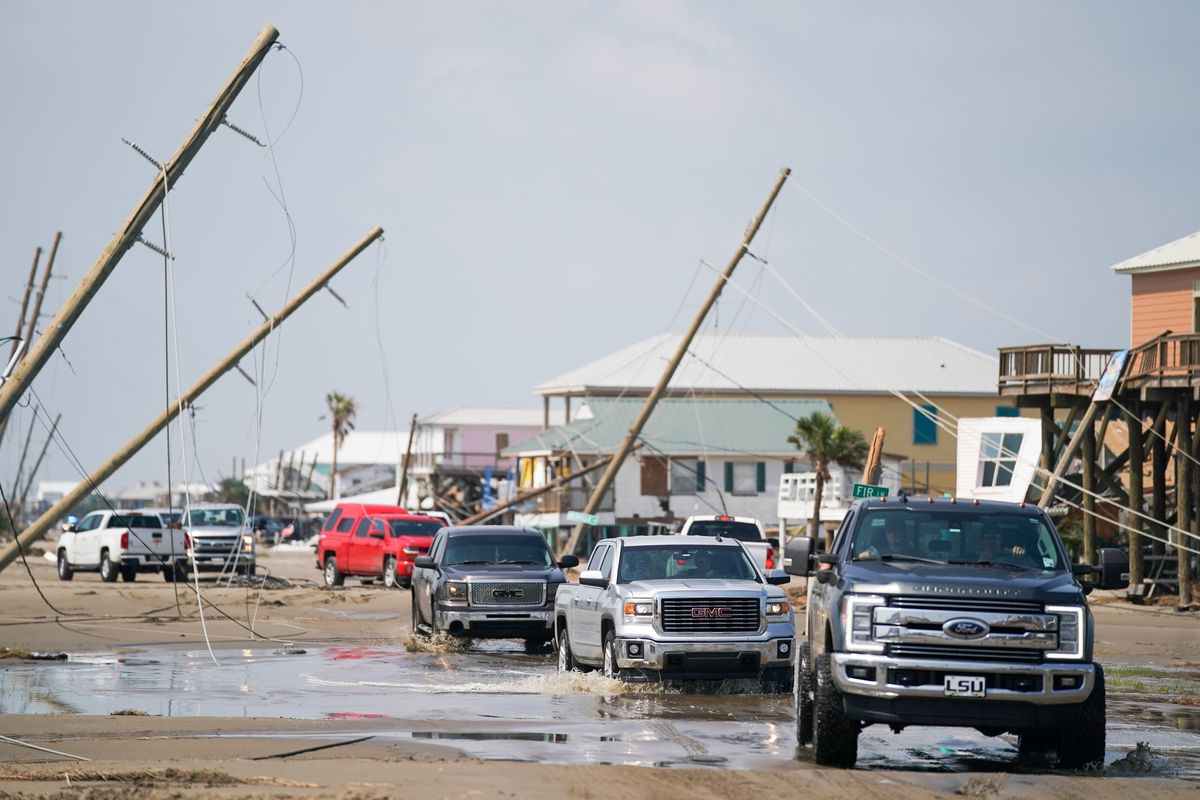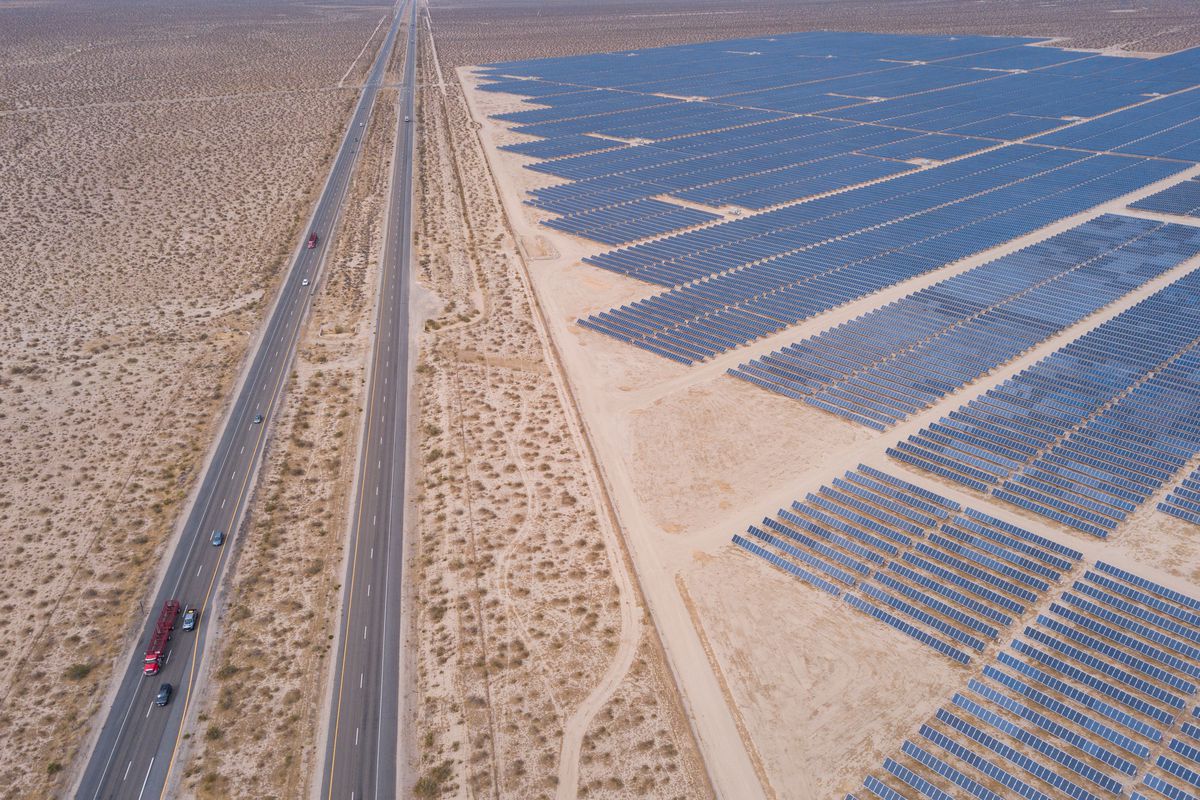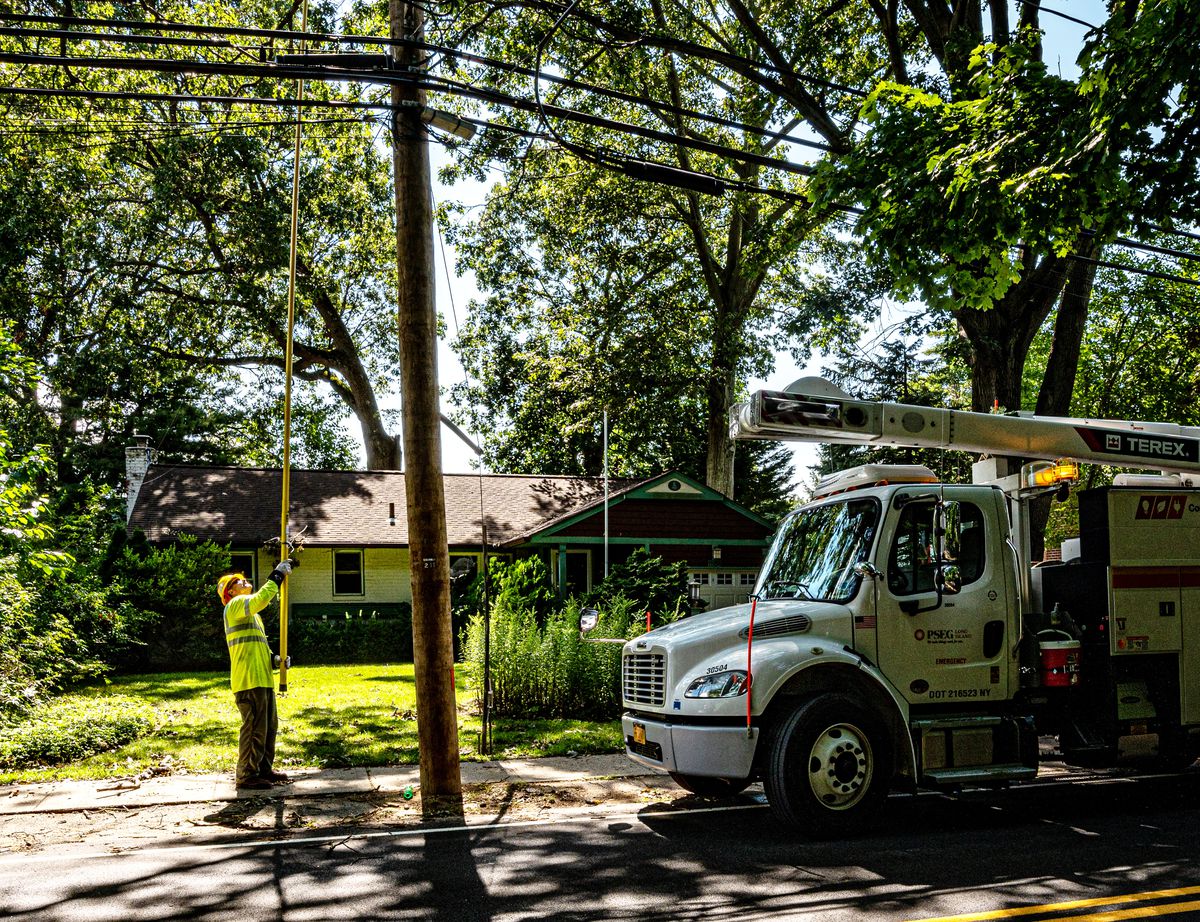This year, millions of Americans across the country lost power at times when they needed it most. As the US power grid deals with an onslaught of heat waves, winter storms, and stronger hurricanes caused by climate change, these kinds of failures are happening more often, taking longer to fix, and harming more people. Power blackouts, which used to be mostly seasonal occurrences, now occur year-round.
But as we head into another winter — the season that accounts for the majority of the fuel used by residential customers in the United States — the power grid isn’t any better prepared for the extreme weather it is likely to face.
Take Texas. In February, a winter storm froze power plants in the state, leaving millions of people without power and killing hundreds who had no way to escape the cold. Despite the toll of those power failures, Texas regulators originally had no intention of mandating winter weather upgrades from most suppliers of natural gas, which powers 40 percent of the state’s power plants. After overwhelming criticism, the regulators changed their tune on November 30, announcing a new rule that will require more than 19,000 natural gas facilities to invest in those upgrades — though they won’t need to start making any changes until 2022 at the earliest. That means Texas isn’t ready for what might come this winter.
And Texas is by no means the only state unprepared for natural disasters. In June and July, heat waves in Oregon melted power cables and triggered blackouts, contributing to many of the more than 95 heat-related deaths in the state. A couple months later, Hurricane Ida knocked out power for at least 1.2 million homes and businesses across eight states, killing at least 12 Louisianans who had no way to escape the midsummer heat, among other hurricane deaths.
A groundbreaking study from earlier this year linked climate change to extreme weather. The authors of the study wrote they were “virtually certain” that heat waves had become longer and more frequent since the 1950s due to greenhouse gas emissions. 2021 was the hottest summer on record since the Dust Bowl of 1936, and there’s no reason to think 2022 will be any better — which means there’s no reason to think the crumbling American grid will get a reprieve anytime soon. As extreme weather caused by climate change becomes the new normal, it’s clear the US’s power infrastructure needs fixing more than ever.
So, what will it take? One of the most important fixes would be physically “hardening” the grid, which means replacing old infrastructure that’s vulnerable to extreme weather with stronger, more resilient upgrades. These are the kinds of solutions you might notice if they pop up in your neighborhood, perhaps in the form of swapping out wooden electric poles for wind-resistant steel or concrete ones, moving power lines underground, or lifting ground-level transformers out of the path of potential floods. But these upgrade projects require major investments of time and money, and utility companies are either unable or unwilling to make those kinds of investments — at least not at the scale and pace needed to keep up with climate change.
As a stopgap measure, some utility companies are turning to software and artificial intelligence-based solutions that might be able to help reduce failures within the infrastructure that already exists. But AI isn’t a magic bullet, according to Romany Webb, a research scholar at Columbia Law who studies the risks climate change poses to utilities. “The vast majority of outages are caused by weather events,” Webb said. “As climate change causes more extreme weather events, those outages will happen more often.” No AI can stop the weather — it can just try to help us get through it.

Fixing the grid is, to put it lightly, difficult. One positive development is the $1.2 trillion infrastructure bill President Biden signed in November, which dedicated $65 billion in funding to improving the grid across the US, and includes $3 billion set aside for technologies like smart meters and advanced communications systems that might finally bring the grid into the 21st century. But exactly what that grid of the future will look like is still up for debate.
The grid, briefly explained
Sometimes called the largest machine in the world, the American power grid is a sprawling behemoth of interconnected systems, strung together over thousands of miles, that mishmashes technologies old and new. As Recode explained earlier this year, bringing electricity to American homes involves generating power through renewables or fossil fuels (38 percent of the country’s electricity comes from natural gas); sending that power across high-voltage lines to transformers and substations; and then distributing the electricity to buildings through low-voltage lines.
“It’s actually kind of magic that the grid works,” Kyri Baker, an assistant professor of engineering at the University of Colorado Boulder, told Recode. That’s because parts of the grid are very old, with components dating back to the 1940s, and the whole thing was never designed for a world with the energy demands created by smart devices, electric cars, and climate change. When the grid was first being built, most homes only needed enough electricity for a few light bulbs, a refrigerator, and maybe a radio. “We have transformers that are 80 years old, and their copper and insulation is breaking down,” Baker said. Even without extreme weather battering the grid, those components would need to be replaced soon anyway.
The outdated technology of our grid is at odds with our otherwise interconnected world. Today’s grid is a one-way street: Electricity flows from power plants to homes and businesses, and once a month the power company will check electricity meters to bill customers for their usage. This means utility companies know surprisingly little about what happens to the electricity they generate once it leaves a power plant or transformer. In much of the country, utilities only find out about power outages when customers call them in.
“Most utilities don’t have a way of automatically determining what the consumption in your house is right now,” Baker said. Instead, engineers are left to use the few sensors they do have to make inferences about demand at any given time; every five to 15 minutes, grid engineers calculate how much power should be produced at power plants and generators and how it should be distributed through the grid.
That system assumes the energy flowing through the grid is always stable, which makes it difficult to offer clean energy to Americans. “Renewable energy is intermittent,” said Baker. Solar and wind farms only generate energy when there is enough sun and wind, and grid engineers aren’t used to working with those types of fluctuations, which means they’re reluctant to make the switch to clean energy. “The grid needs to react significantly faster than it’s reacting right now,” said Baker. In other words, the grid should automatically switch to solar and wind power when they’re available, and seamlessly bring in energy from other sources if solar and wind farms aren’t producing enough power to meet demand.
One way to make that happen, Baker explains, is to make the grid smart. This would allow for the flow of not just electricity but also information between power plants and customers. Sensors along power lines would give engineers a better understanding of how their equipment is working, while internet-connected smart meters would allow utilities to view and account for customers’ electricity demands in real time. AI-powered systems could use that data to respond quickly to fluctuations and outages, rerouting power and increasing generation automatically instead of waiting for manual input from engineers.

The city of Chattanooga, Tennessee, is a good example of what a connected grid might look like. Chattanooga modernized its grid in 2009, installing smart meters in customers’ homes and digital controls that allowed the electric utility to monitor and respond to demand and outages in real time. The new technology had an immediate, simple impact: Instead of sending crews out every time a circuit breaker flipped, the smart grid allowed engineers to turn those switches back on from a control room. Power outages in the city were reduced by about 55 percent.
Chattanooga’s grid is a powerful indicator of how information can help fix the grid. But Baker thinks the future American grid should go one step further, allowing not just information but electricity to flow from customers to utilities.
A smart grid that allows electricity to flow in both directions (in other words, not just from the power company to the consumer but from the consumer to the power company as well) would open the door for the widespread adoption of microgrids. These self-sufficient systems generate their own power, whether from renewables such as solar panels or from fossil fuel-powered generators, and can separate themselves from the larger grid to operate on their own during a blackout — think of hospitals with backup generators that kick in during storms, for example. In the current setup, there’s no way for buildings that can generate their own power to share it with others. A smart grid would allow for that kind of electricity sharing.
Grid hardening and building out a smart grid in the US would work hand in hand, and replacing infrastructure to make it more resilient is the ideal opportunity to add the kinds of sensors that could make the smart grid a reality. “We’re in the Motorola Razr stage of the smart grid transition right now,” Baker said. Having the ability to see changes in real time and incorporate clean energy and microgrids into the American grid would be like upgrading from an old-school Razr flip phone to an iPhone 13.
But smart grids and grid hardening, like iPhones, are pricey. They’re also logistically complicated. Usually, utilities pass the costs of infrastructure investments down to customers, but nobody wants to pay higher electricity bills, especially for long-term investments that might take years to bear fruit. That means utilities are wary of making those investments. The recently passed infrastructure bill and the hotly debated Build Back Better bill, the current iteration of which would include big investments in clean energy, might help close the funding gap. In the meantime, utilities are looking at using AI as a potential stopgap that could help prevent outages even if Americans are stuck depending on the infrastructure that already exists.
How software can tide the country over
Most power outages are the result of one or two factors: weather and trees (which are often knocked down by bad weather). For decades, utility companies have paid weather companies for meteorological models to help them keep track of storms, and tree-cutting crews make routine passes along the paths of power lines to trim branches and cut trees that might be at risk of hitting power lines. But these are blunt instruments: Weather models can tell a utility what kind of weather will affect a region, but they can’t translate that data into on-the-ground effects on infrastructure.
Tree-cutting crews, meanwhile, don’t account for the different ways various tree species grow. If a neighborhood contains both cottonwoods and red maples, for example, they are all trimmed at the same time — which means the faster-growing cottonwoods could grow back before the crews made their next pass, putting power lines at risk, or the slower-growing maples could be cut too aggressively, endangering the trees and the ecosystems that rely on them.

A team at the State University of New York in Albany is attempting to fix the weather-prediction problem with AI. “We’re trying to develop techniques that will allow us to best match the weather that likely caused the outage with the outage itself,” said Nick Bassill, a researcher at SUNY Albany’s Department of Atmospheric and Environmental Sciences.
By looking at historical outage data and cross-referencing it with hyperlocal weather data from a state-of-the-art weather monitoring system installed by New York State in 2016, Bassill and his colleagues are training a machine-learning algorithm to try to predict the exact effects of any given weather event on a utility company’s infrastructure. These predictions can help companies decide how to deploy crews ahead of time so they’d be in place to respond quickly in case of a blackout.
“We know that the Albany area, as a hypothetical, is highly susceptible to icing-over power lines during nor’easters because it’s in a valley,” said Kara Sulia, who runs the SUNY Albany lab developing the machine-learning algorithm. If a nor’easter — a winter storm that arrives from the northeast and tends to bring blizzards to that part of the country — looked likely to blow into the region, the algorithm would flag the risk to power lines for meteorologists and engineers at the utility responsible for those power lines. In the long term, Sulia said, the algorithm could help utilities decide where to invest in grid-hardening. In the short term, it would help those utilities better prepare for extreme weather caused by climate change.
Overstory, a Netherlands-based AI company, is doing for trees what Bassill and Sulia are doing for the weather. Utilities across the country spend billions of dollars each year on vegetation management, said Indra den Bakker, CEO of Overstory, but they have very little data on the kinds of vegetation they’re dealing with. That’s because traditional surveys of wooded areas, conducted on foot and by helicopter, can take months or years to complete. Overstory aims to fix that problem by using extremely high-resolution satellite imagery to identify tree species, track their growth, and make recommendations for when and where trees should be cut.
“What’s most important is reducing the risk of ignition,” said den Bakker, especially as climate change brings drought, drier trees, and a higher risk of wildfires. “What happens if a tree touches your power line? If there’s lots of dead trees with a lot of fuel load around, that can have massive consequences.”
The problem of gold-plating
While tools like Overstory and SUNY Albany’s machine-learning algorithm can prove very useful in the short term, AI does little to address the root of the problem, said Webb, the Columbia researcher. “The vast majority of utility planning is based on historical data,” said Webb. “Equipment is designed to operate reliably at an average temperature based on historic averages, and as temperatures increase, that infrastructure operates less reliably.”
Solutions that focus on responding to outages fail to take the bigger picture into account, and researchers like Webb are concerned utilities tend to over-invest in outage prevention without considering larger investments that will have greater payoffs over time. A utility that’s focused on preventing outages might invest in a gas-powered plant that’s meant to provide power in an emergency, for example, without taking into account how that plant might be affected by or contribute to climate change — which is exactly what happened in Louisiana earlier this year.
“Utilities will seek to gold-plate their systems to purportedly limit outages but will really just have limited payback in terms of future climate impacts,” said Webb. Customers are inevitably left to pay for technologies that might look and sound useful in the short term but have little long-term benefit.
Instead of focusing on trying to prevent outages at any cost, said Baker, of the University of Colorado Boulder, perhaps customers and utilities should get used to a future where energy is less reliable. “Unfortunately, we’re going to have to get used to more blackouts. They’re just going to be a function of the aging infrastructure and climate change,” Baker said. “Most people view electricity as sort of a given. I think that paradigm is going to have to change.”
Correction, December 2, 3:30 pm ET: A previous version of this story overstated how often grid engineers make manual decisions about how much power should be produced at power plants and generators. Though they sometimes make these decisions manually, they also rely on automated software to do so.



